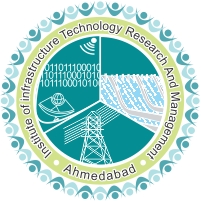Optimal Model-Free Finite-Time Control Based on Terminal Sliding Mode for a Coaxial Rotor
Authors :- HE Glida, C Sentouh, JJ Rath
Publication :- Drones, 2023, 7(12), 706;
first_pagesettingsOrder Article Reprints Open AccessFeature PaperArticle Optimal Model-Free Finite-Time Control Based on Terminal Sliding Mode for a Coaxial Rotor by Hossam Eddine Glida 1ORCID,Chouki Sentouh 1,2,*ORCID andJagat Jyoti Rath 3ORCID 1 LAMIH UMR 8201 CNRS, University Polytechnique Hauts-de-France, 59313 Valenciennes, France 2 INSA Hauts-de-France, 59313 Valenciennes, France 3 Department of Mechanical and Aero-Space Engineering, Institute of Infrastructure Technology Research and Management, Ahmedabad 380026, India * Author to whom correspondence should be addressed. Drones 2023, 7(12), 706; https://doi.org/10.3390/drones7120706 (registering DOI) Submission received: 27 October 2023 / Revised: 9 December 2023 / Accepted: 11 December 2023 / Published: 13 December 2023 (This article belongs to the Topic Target Tracking, Guidance, and Navigation for Autonomous Systems) Downloadkeyboard_arrow_down Browse Figures Versions Notes Abstract This study focuses on addressing the tracking control problem for a coaxial unmanned aerial vehicle (UAV) without any prior knowledge of its dynamic model. To overcome the limitations of model-based control, a model-free approach based on terminal sliding mode control is proposed for achieving precise position and rotation tracking. The terminal sliding mode technique is utilized to approximate the unknown nonlinear model of the system, while the global stability with finite-time convergence of the overall system is guaranteed using the Lyapunov theory. Additionally, the selection of control parameters is addressed by incorporating the accelerated particle swarm optimization (APSO) algorithm. Finally, numerical simulation tests are provided to demonstrate the effectiveness and feasibility of the proposed design approach, which demonstrates the capability of the model-free control approach to achieve accurate tracking control even without prior knowledge of the system’s dynamic model.

